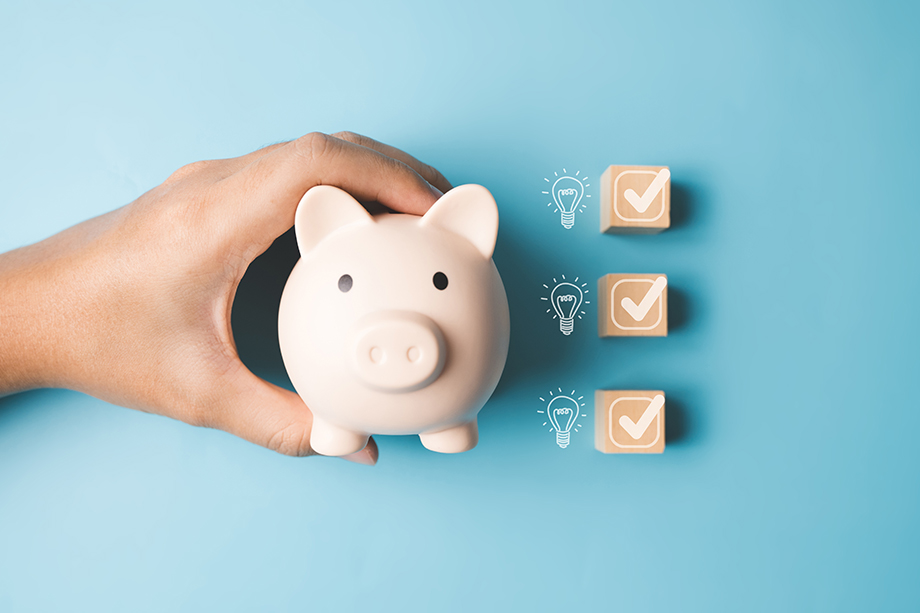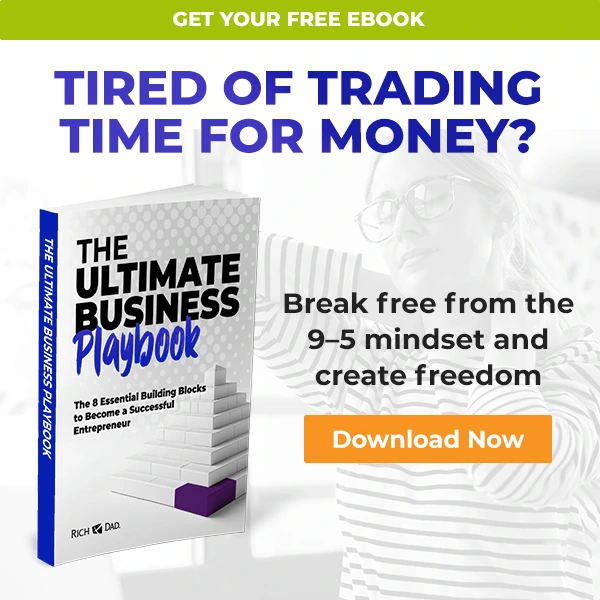In the journey to financial freedom, understanding asset classes is a cornerstone of wealth-building. Rich Dad’s philosophy emphasizes that accumulating assets isn’t enough — true financial mastery comes from knowing what kinds of assets you own, how they behave in different market conditions, and how they work together to generate consistent cash flow.
This guide explores the key types of asset classes, why diversification is critical to long-term wealth, and how to structure a portfolio that aligns with Rich Dad principles of cash flow, control, and financial freedom.
What are asset classes?
An asset class is a group of investments that share similar characteristics, risks, and expected returns. Each behaves differently under varying economic conditions — and understanding these behaviors helps investors build more balanced portfolios.
While there are many assets you can choose to invest in, we’ll discuss the five primary asset classes today. They are:
Here are the five major asset classes:
- Business
If you are considering starting a business, then you can use your own money, raise money from private individuals or borrow money from a traditional lender in order to get started. The purpose of the money you invest, no matter where it comes from, is to generate a return on that investment — which will go back to you, the business, and your investors and/or lender.
Now, let’s say a friend comes to you seeking an investment in his/her business idea or gives you a hot tip on an investment they are making in someone else’s business. You may choose to invest in this private business or company — after first doing your due diligence to determine if the opportunity is right for you, of course. Since the business and the owners may or may not be familiar to you, you’ll need to do your homework on:
- The project (the business itself)
- The partners
- The financing
- The business and management team.
- Real estate
There are two main reasons to invest in real estate: for cash flow from rental properties and for capital gains when you buy and sell (flip) properties. A Rich Dad, we encourage rental real estate investments because cash flow fits our formula for financial independence. You’ll decide which model works best for your goals and situation.
Real estate investing is not a one-size-fits-all solution. There are many investment options when it comes to this asset class: single family, duplex, triplex, apartment buildings, office buildings, retail strip malls and shopping centers, and industrial properties such as warehouses, hotels and mobile-home parks. It’s best to start small in the beginning, but the sky is literally the limit — maybe someday you’ll own a skyscraper!
One of the biggest benefits of real estate is the concept of leverage.
Leverage is the ability to use OPM (or Other People’s Money) to purchase the asset. A property that is highly leveraged means there is a lot of debt on the property compared to equity (equity means the current market value minus the debt.) A property that has a debt of 90 percent (which means the owners and investors put down 10 percent) is more highly leveraged than a property that borrowed 70 percent and put 30 percent cash into it. The higher the debt on the property, the lower the cash flow. The lower the debt, the higher the cash flow. You can learn more about using other people’s money to invest here. - Paper assets
Most people are already familiar with traditional paper assets, which include stocks, bonds, mutual funds, and retirement accounts. You can also invest in stock options, stock futures, and foreign exchange. Paper assets include REITs (real estate investment trusts), which are funds that only invest in real estate. Paper assets also include ETFs (exchange-traded funds).
This asset class is typically capital-gains investments (versus cash flow). However, stock dividends are taxed as cash flow. Once you learn the language of paper assets, you can jump right into investing. - Commodities
The next asset class is commodities — metals such as gold, silver, and copper; food such as grains, corn, coffee, and sugar; and raw materials such as oil, gas, and cotton. The price of commodities is typically driven by supply and demand. If there is a bumper year of corn, then prices are low since the supply of corn is high. If, on the other hand, there is a shortage of corn due to a drought and unfavorable weather conditions, then the price of corn will be high.
You can buy commodities such as gold and silver at your local precious-metals dealer. Or you can buy what are called future contracts of any commodity through the futures exchanges. Commodities are generally a capital-gains (or loss) asset instead of a cash flow situation. - Cryptocurrency
The final asset class is cryptocurrency, a decentralized digital currency that you can buy, sell or exchange directly — and it’s not backed by the government or any issuing institution. It seems everyone is talking about digital currencies like Bitcoin, Ethereum, Tron, and Litecoin (there are more than 5,000 cryptocurrencies in existence today) these days. And why not? With massive fluctuations in value and short-term gains in the 1000% range, it’s very exciting and enticing stuff.
Some people are turning to bitcoin and other cryptocurrencies as an alternative investment, helping to diversify their portfolio. There are two main types of investors: those who buy and hold it long term and those who buy and sell after a price rally. But just like with the stock market, if you don’t know what you’re doing, you’re bound to get burned.
Yes, if you haven’t done your due diligence, there’s a potentially dangerous side to the game of cryptocurrency. How so? Here’s an unfortunate list of would-be crypto-millionaires who lost their passwords and got locked out of their own fortunes. And here’s the story of a man who owns $321 million in bitcoin, but can’t access it. Ouch. Also, there are unpredictable crashes, just like with the stock market.
Another word of caution, while we’re at it: Cryptocurrency is not an asset, because it does not put money in your pocket. Because it is exploding in value, many people feel rich, but they are not. Bitcoin and other cryptocurrencies are not useful for commerce, so the only way to realize value is to sell. Only then, if you make a profit, do they become an asset.
Why asset classes matter for diversification and risk management
The saying “Don’t put all your eggs in one basket” perfectly captures the logic behind diversification. But Rich Dad would add, “Make sure those baskets pay you every month.”
Diversification spreads your investments across asset classes with different risk and return patterns, helping protect your wealth when one area of the market underperforms. A well-diversified portfolio can reduce volatility and create a smoother, more predictable path to financial independence.
Traditional diversification focuses on spreading risk. Rich Dad diversification focuses on cash flow and control — ensuring you’re not dependent on market timing or appreciation to grow your wealth.
We’ve covered the five primary assets above; take note, a truly diverse portfolio would have stakes in all or most of these. So if you’re planning on using diversification as a hedge strategy, at least do it right and make sure you’re diversified over all five asset classes, not just in paper assets. This is a true investment strategy, and it will at least protect you from a total loss of your wealth should one asset class crash.
Asset class correlations and hidden risks
Many investors think owning several mutual funds equals diversification — it doesn’t. If all your funds own stocks, you’re still exposed to a single asset class.
The key is correlation — how assets move relative to one another. Assets with low correlation help smooth returns, ensuring that when one investment zigs, another zags.
A balanced mix of uncorrelated assets reduces volatility and builds resilience, especially during economic downturns.
Diversification, systemic risk, and non-systemic risk
The reason diversification is a high-risk way to invest becomes clear when you consider systemic and non-systemic risk.
A number of years ago, British Petroleum (BP) suffered a major oil spill. During that time the company’s stock dropped by over 50%. This did not impact the market, however, and things carried on as if nothing happened in other stocks, the real estate market, etc.
That is an example of non-systemic risk. If you had all your money in BP stock, you would have been hurt, losing half your wealth. But it would be isolated to that one company. The rest of the market investors would be fine.
Amateur investors try to manage the type of risk that would come from focusing on one stock, in this case BP, by diversification across the stock market. The problem is that they then get exposed to systemic risk, which is much riskier.
An example of systemic risk is the subprime mortgage meltdown. Brokers handed out mortgages like candy, approving zero down, stated income, no documentation loans. When millions of people who lied to get a house they couldn’t afford stopped paying those loans, the entire system was impacted. The S&P 500 index dropped by over 50%.
When it comes to systemic risk, diversification won’t help you. And systemic risk is always a matter of not if, but when. If you’re lucky, it hits when you still have time to recover. If not, well then you’re screwed. It’s a big gamble when there are other strategies you can put into place that will not only protect you better but also make you far richer…if you have the financial education needed to execute on them.
How to allocate among asset classes
There’s no one-size-fits-all approach. Allocation depends on:
- Your goals
Growth, income, or preservation of wealth - Time horizon
How long until you need your money - Risk tolerance
Comfort with volatility and loss - Cash flow needs
Passive income requirements - Liquidity preferences
Access to cash when needed
Build your portfolio around cash flow and control. Stocks and bonds can play a role, but prioritize assets that pay you regularly — like rental properties, dividend-paying equities, or business ownership.
Rebalancing and maintaining your portfolio mix
Over time, your investments will grow at different rates. This can skew your asset allocation and increase risk exposure. Rebalancing — selling a portion of outperforming assets and buying underperforming ones — helps keep your portfolio aligned with your strategy.
But Rich Dad cautions against emotional rebalancing. Don’t chase returns or react to market news. Instead, focus on cash flow optimization and long-term wealth-building principles.
Taking next steps
While it might be overwhelming at first, start small. Set your goals, research and increase your financial education and then take action.
What one step are you going to take today on your journey to financial freedom?
If you’d like some help pinpointing your next step, here are some practical steps to start:
- To get more information and inspiration from others as you start your journey to financial freedom, check out Rich Dad investing classes.
- Explore working with a personal finance coach on such topics as real estate, stock trading and personal finance.
- Stop making excuses and learn how to get started in real estate by first debunking the myths that are holding you back and then creating a plan to move forward.
- Learn more about Bitcoin and other cryptocurrencies from crypto expert Jeff Wang.
- Discover everything that falls under the “commodities” umbrella, including silver, gold, oil and gas — and which are the easiest to start with.
- Visualize your investments, and list them by asset class.
- Evaluate each for cash flow, control, and correlation.
- Set target allocations that align with your financial goals.
- Remember, rebalancing periodically–and strategically– is important.
- Finally, stay open to continuous learning. Financial education compounds faster than interest.
Understanding asset classes isn’t just about knowing what you own — it’s about mastering how your assets work together to produce reliable cash flow and reduce risk.
True diversification doesn’t mean spreading risk; it means building a network of cash-flowing assets that work for you.
Commit to taking just one action today, and then another tomorrow. Once you gain more knowledge and some momentum, you’ll find the asset classes that are perfect for you.







